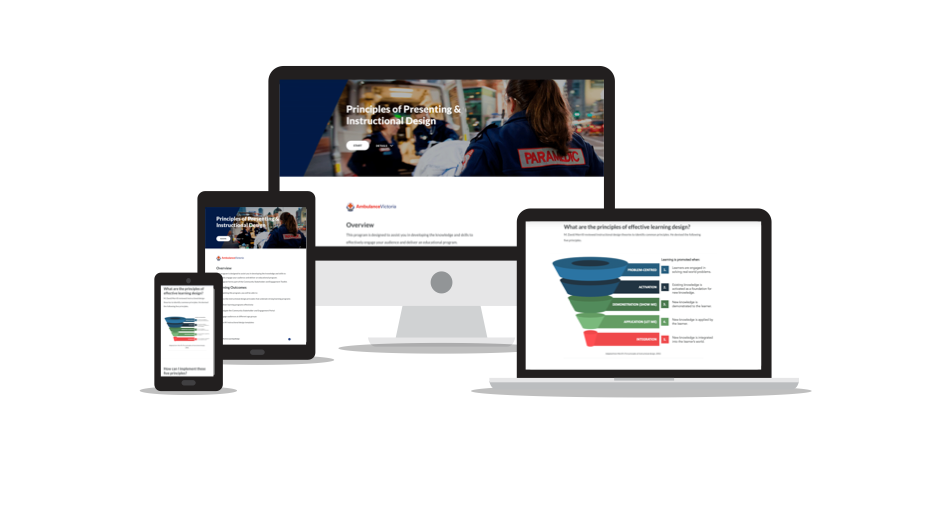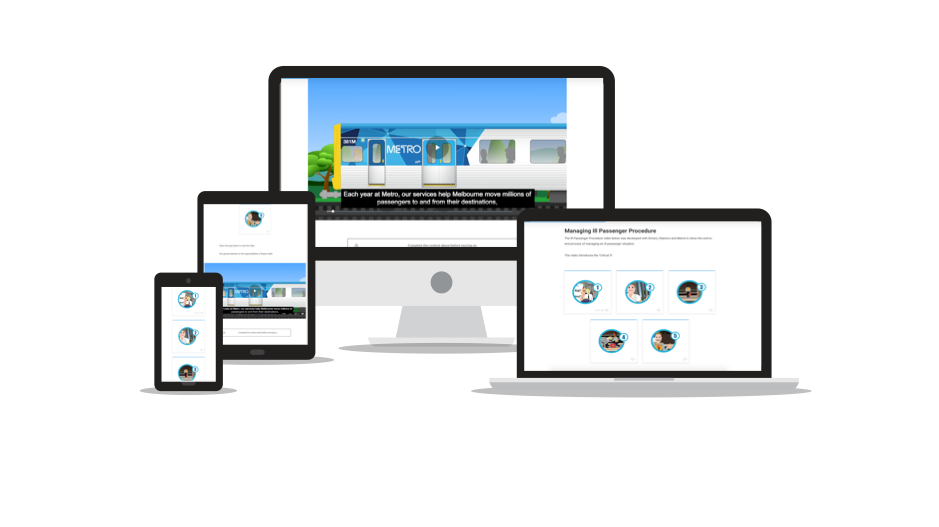eLearning: Dos and Don’ts
Organisations have never been under more pressure to compete, remain dynamic, flexible and fast-paced.
Employees are time-poor, and increasingly want (at their fingertips) access to bite-size and flexible in time and place, just-in-time learning.
Enter e and mobile learning.
The benefits of online learning are obvious. Being able to reach participants, regardless of time or place, can significantly reduce costs. Such benefits make it an attractive delivery method for both organisations and learners.

But – how do we ensure that digital learning is engaging and effective, offering more than a ‘tick and flick’ approach?
Below are some ‘Dos and Don’ts’ to consider when developing your eLearning program.
Do
1. ‘Chunk’ learning into ‘micro-bites’
Modern learners are busy! 2/3 of knowledge workers complain that they ‘don’t have enough time’ to do their job [1]. Breaking online learning into smaller chunks allows learners to complete sections when they a have a ‘spare 5 minutes’, or to access ‘bites’ that are relevant to the moment.
2. Embed videos, multimedia and infographics
Multimedia and videos enhance engagement, strengthen learner understanding of concepts and increase knowledge retention. Videos and photos can be used to demonstrate the application of concepts in real life contexts – and Infographics are great for presenting complex concepts visually.
3. Integrate interactive elements
By integrating elements such as exploratory screens and activities (e.g. drag and drop), learners actively participate in constructing their knowledge. Include activities that provide participants with opportunities to apply their learning. For example, a program designed to teach how to operate a new system may switch between online content, and ‘skills practice’ where participants perform key tasks on a ‘sandpit’ version of the live system.
4. Incorporate social aspects
Social interactions play an important role in learning. Sharing insight, perspectives and ideas with peers strengthens understanding of concepts. Incorporate social elements by using internal forums, messenger groups or by encouraging discussion around ‘success’ and ‘failures’ with others on the job.
5. Inspire action
Recent studies have found that 55% of effective learning occurs through on the job experiences [2]. eLearning programs should inspire learners to apply their new insights in the workplace. Ensure there is a ‘so what?’ plan for embedding and extending learning post-program.
6. Use responsive eLearning tools
One of the benefits of eLearning is that it can be accessed flexibly in place and time. To ensure this, use an eLearning tool that is responsive in design, enabling learners to complete the program on their computer, phone or tablet.
7. Know your audience
Not all learners are ‘digital nomads’. eLearning may be daunting to those with little exposure to online programs. An eLearning program should consider all ppotential digital capabilities to avoid barriers – and to empower learners to take charge of their own learning.
8. Implement evaluation strategies
Evaluation strategies are used to determine whether the program has hit the mark, and to assess how it could be improved. Examples of this for eLearning may include feedback surveys, focus group forums and knowledge checks to assess learners understanding of key concepts.
Don’t
1. Include long videos
Most learners will avoid videos that are longer than 4 minutes [3]. Short videos are more likely to engage and maintain learner attention.
2. Create an online textbook/manual
An extensive amount of text is overwhelming to most people. Instead, only provide the information participants need, and provide links to other sources for further information.
3. Skip a learning needs analysis
A Learning Needs Analysis (LNA) pinpoints the knowledge, skills and behaviours required to shift capability. These are used to determine the most appropriate learning solution (as well as the specific learning outcomes that will inform the program design).
A blended learning solution (e.g. eLearning, coaching and on-the-job demonstration) may be required to meet the learning needs.
Learn more about eLearning
- How-To: Design for Online Courses
- The Learning Benefits of Video and Multimedia
- eLearning services provided by IDA
Contact Us
Discover Learning Designs (DLD) and Instructional Design Australia (IDA) provide eLearning Development services to support workplace learning and change. With team members in Melbourne, Sydney, Brisbane and Perth DLD will enable your people to engage, learn and perform. Call us on 1300 208 943 or make an online enquiry.
[1][3] “Meet the Modern Learner” (infographic) Bersin by Deloitte, 2014.
[2] “Deconstructing 70-20-10” Training Industry, Inc., 2018.

